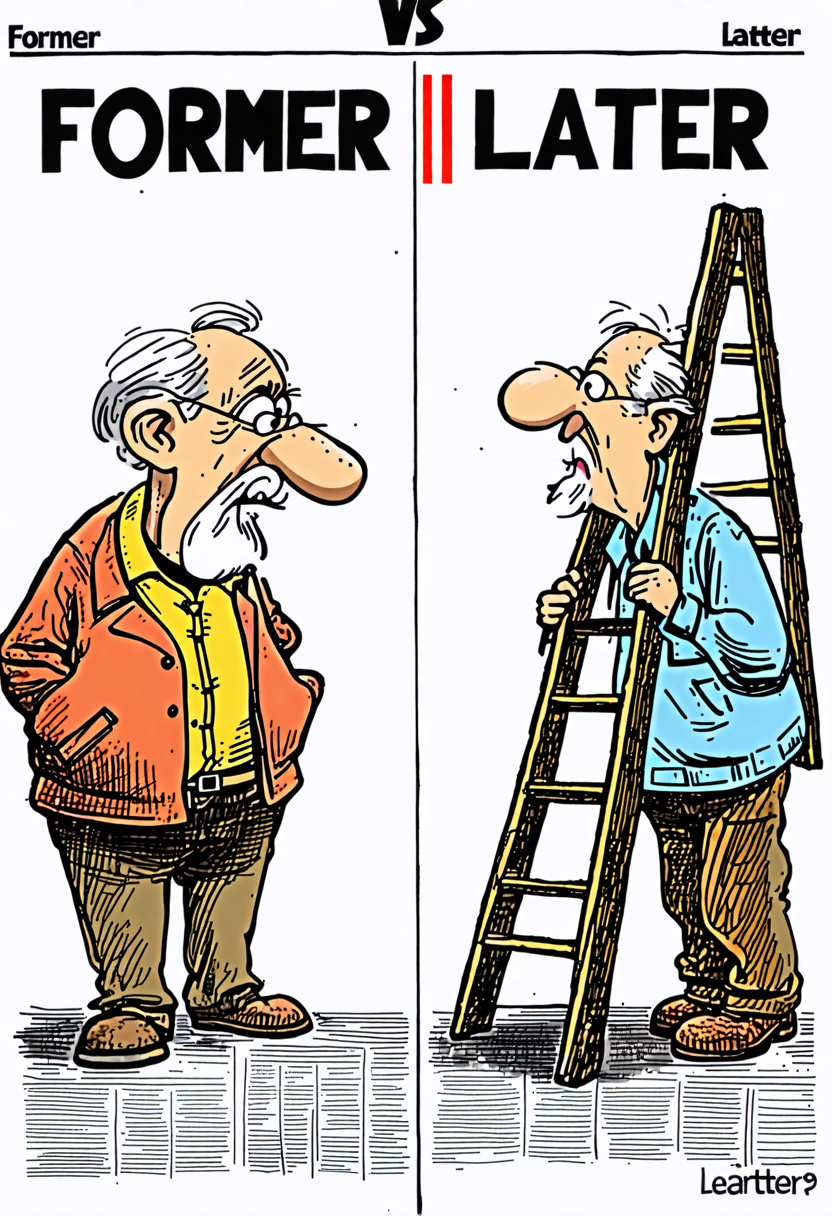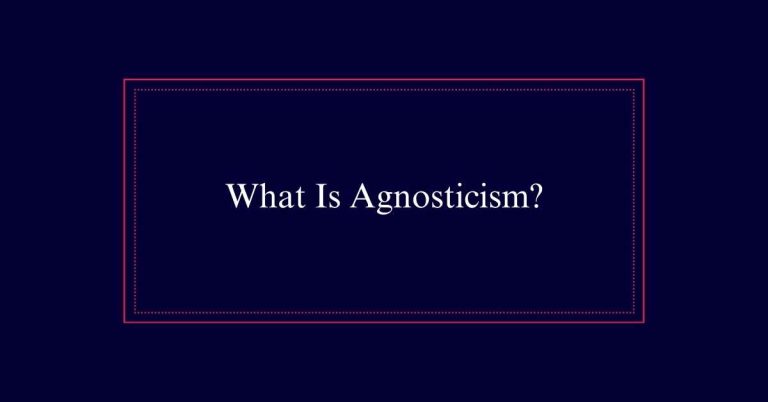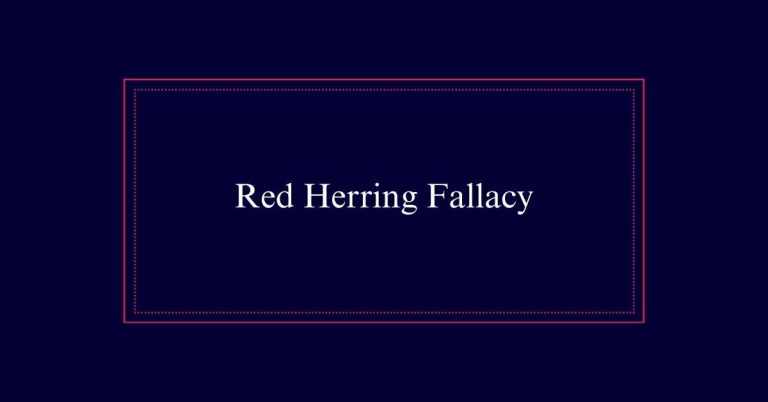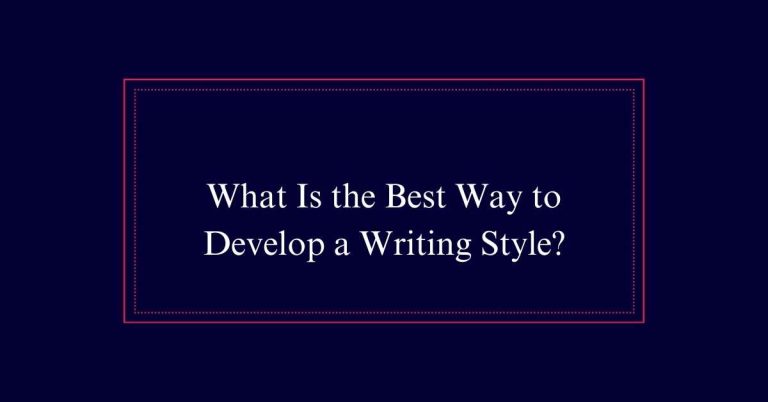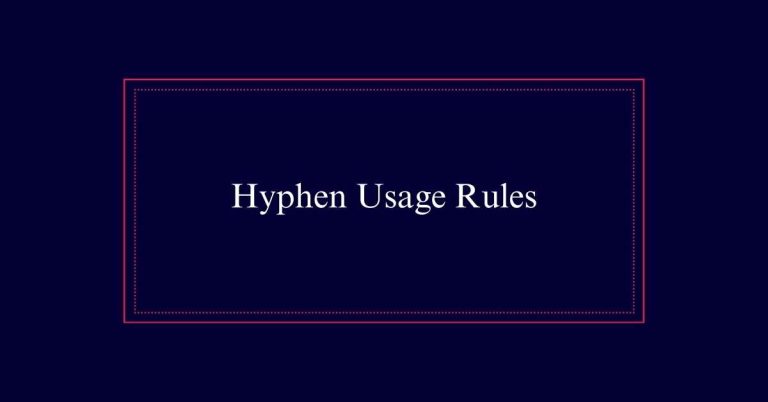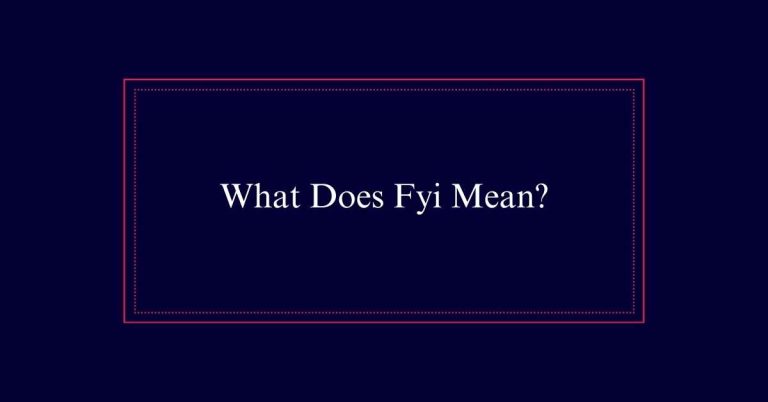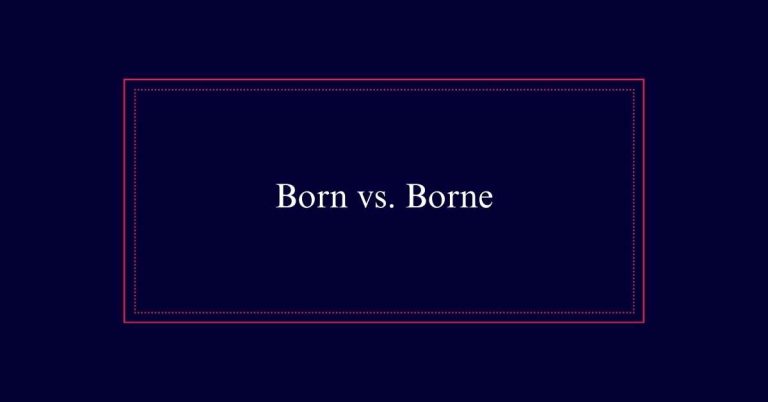Former Vs. Latter
The terms ‘former’ and ‘latter’ are used to distinguish between two items. ‘Former’ refers to the first of the two, while ‘latter’ denotes the second. For example, in the sentence “You can choose between cake and ice cream; the former is sweet, and the latter is chilly,” ‘cake’ is the former, and ‘ice cream’ is the latter. Always use ‘the’ before these words for clarity and do not apply them to lists with more than two items.
Definitions of Former
The term ‘former’ refers to the first of two items mentioned in a sentence. It originates from the Old English word ‘forma.’ The original definition dates back to the mid-12th century.
In addition to indicating the first of two items, ‘former’ can also mean previous or refer to a past state. For example, when comparing two job positions, one might say, ‘My former job was more challenging.’ This usage highlights that ‘former’ can describe something that existed or occurred in the past.
Definitions of Latter
Latter refers to the second of two items mentioned in a sentence. Originating from the Old English word ‘lætra,’ meaning late, it denotes something that occurs nearer to the end.
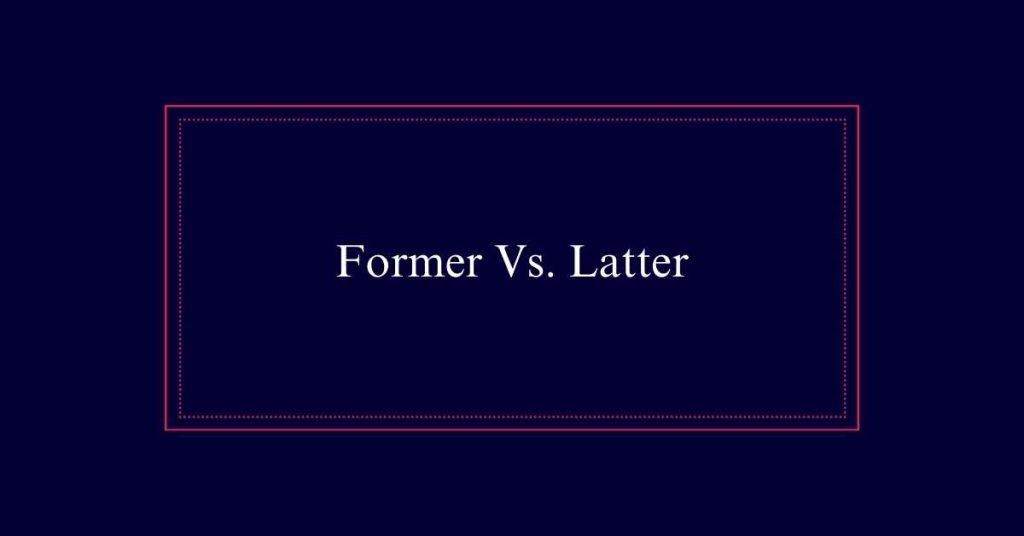
In usage, ‘latter’ helps distinguish between two previously mentioned options, directly pointing to the second. For example, in the sentence, ‘You can choose tea or coffee; I prefer the latter,‘ ‘latter’ clearly indicates coffee.
This term is useful for clarifying choices and ensuring precision in communication. It is important to note that ‘latter’ should not be used when discussing more than two items, as it specifically pertains to the second of two.
Historical Background
Tracing their origins to Old English, former and latter have evolved to become essential tools in distinguishing sequential items in language. ‘Former’ derives from the Old English word ‘forma,’ signifying the first in a sequence. Its use dates back to the mid-12th century, often implying something previous or in a past state.
Conversely, ‘latter’ originates from the Old English word ‘lætra,’ meaning late. It denotes the second of two items or something occurring nearer to the end. Over centuries, these terms have retained their specific roles in language, proving invaluable for clarity and precision in communication.
Correct Usage
Understanding the historical background of former and latter sets the stage for their correct usage.
Use ‘former’ to refer to the first of two mentioned items and ‘latter’ for the second.
Always precede these terms with ‘the’ for clarity.
Avoid using former and latter in lists with more than two items; instead, specify positions like ‘the first’ or ‘the third.’
For example, in ‘We could go to Paris or Rome. I prefer the former,’ ‘former’ clearly indicates Paris.
Similarly, ‘I can choose between tea and coffee; I prefer the latter,’ ‘latter’ refers to coffee.
Common Mistakes
A common mistake when using ‘former’ and ‘latter’ is applying them to lists with more than two items. These terms specifically refer to one of two previously mentioned entities.
When faced with longer lists, using ‘the first,’ ‘the second,’ or ‘the third’ is more appropriate.
Another frequent error is neglecting to use the definite article ‘the’ before ‘former’ and ‘latter,’ which can lead to confusion.
Additionally, people sometimes misuse ‘former’ and ‘latter’ by not clearly establishing the two items to which they refer. This lack of clarity can make sentences difficult to understand.
Examples of Former
The use of ‘former’ in sentences helps clarify references to the first of two mentioned items. This term is especially useful in distinguishing between choices, preferences, or comparisons. Here are some examples to illustrate the use of ‘former’:
| Sentence | Explanation |
|---|---|
| “The host gave us a choice between burgers and hot dogs. I chose the former.” | Indicates a preference for burgers. |
| “Gwen decided between Harvard and Yale, but in the end went with the former.” | Shows Gwen chose Harvard. |
| “The former boss was stricter than our current supervisor.” | Refers to the previous boss. |
| I like hiking and swimming; the former is my favorite hobby. | Hiking is identified as the favorite hobby. |
| “We can do this the easy way or the hard way. I’d pick the former.” | Indicates a preference for the easy way. |
Examples of Latter
Choosing between two options often requires specifying which one is preferred, and ‘latter’ helps clarify the second choice. For example, consider the sentence: ‘If I had to choose between vanilla or chocolate ice cream, I’d go with the latter.’ Here, ‘latter’ clearly points to chocolate ice cream.
Another instance is: ‘We could wait at the airport or get a rental car. I prefer the latter option.’ This indicates a preference for the rental car.
Similarly, ‘Their first car was going to be a hatchback or a pick-up truck. They chose the latter for more cargo space’ specifies the pick-up truck.
Former as an Adjective
Former, when used as an adjective, often describes something that existed in the past. It can refer to a previous state, position, or condition. For example, “former president” denotes someone who once held the title but no longer does. This usage helps to distinguish between past and present states clearly. Below is a table summarizing different uses of “former” as an adjective:
| Example Phrase | Meaning | Context |
|---|---|---|
| Former glory | Past period of success | Historical achievements |
| Former employee | Someone who worked previously | Employment status |
| Former residence | A place where one used to live | Previous living situation |
Latter as an Adjective
Latter, when used as an adjective, typically refers to the second half or more recent part of a period. This usage often describes something that occurs closer to the end of a timeline or sequence. For example, the phrase ‘latter half of the year’ means the second half of the year. Similarly, ‘latter stages of the project’ implies the final phases of the project.
The adjective form provides clarity by pinpointing a specific time frame within a broader context. It helps to distinguish between earlier and later events or periods, ensuring precise communication. Through its application, one can convey a sense of recency or proximity to the present or concluding moments.
